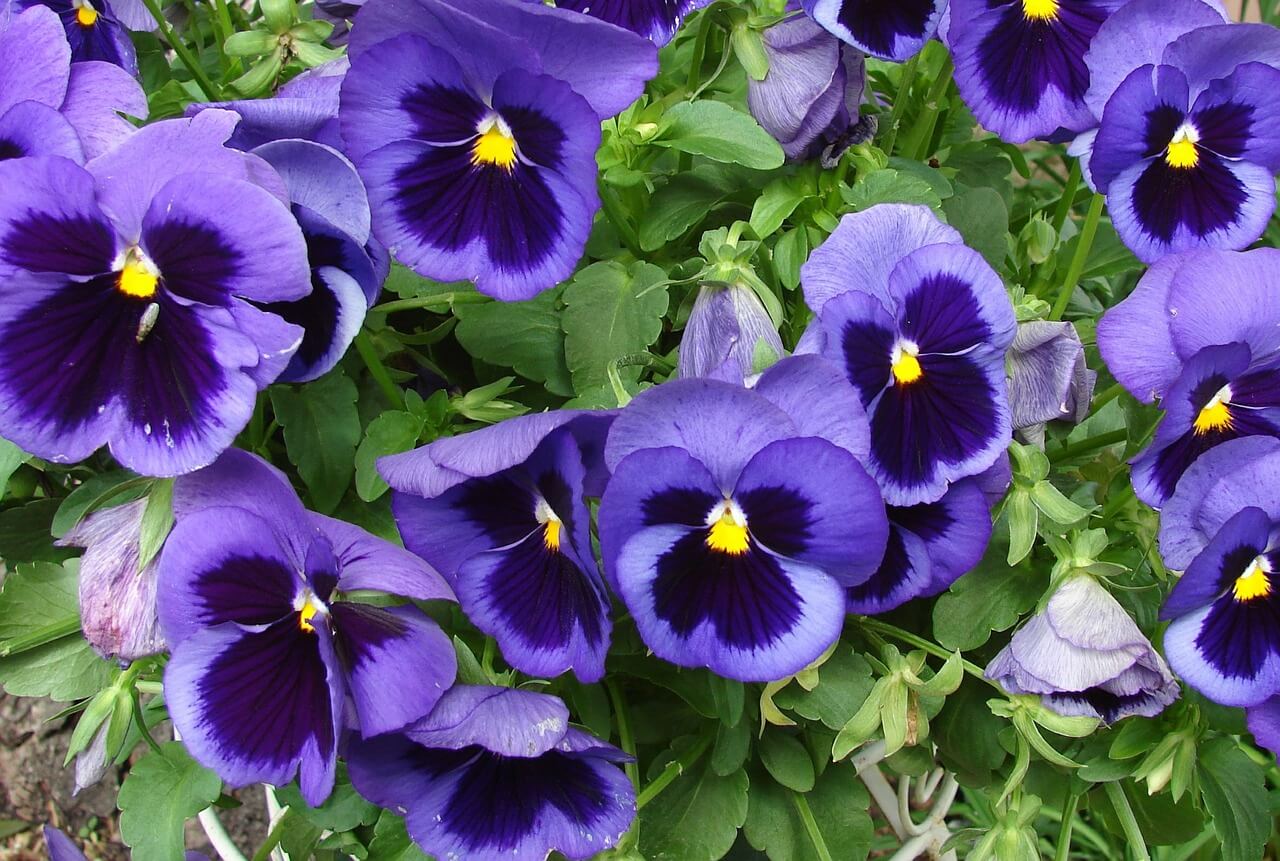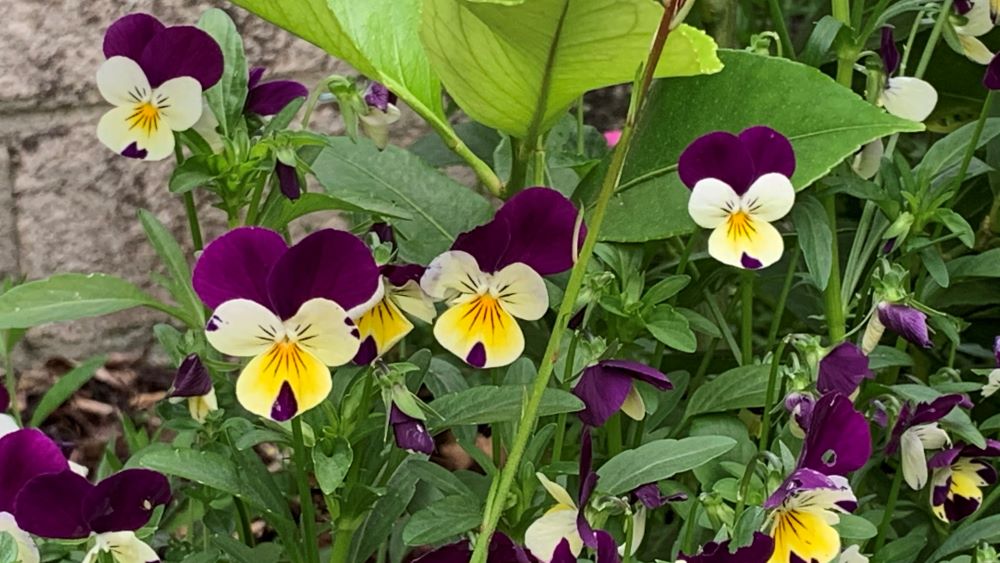Violas And Vegetables: The Perfect Pair
Violas and vegetables are a match made in heaven. They both thrive in cool weather, and they complement each other beautifully in the garden. Violas add a splash of color and cheer, while vegetables provide essential nutrients and flavor.
In this blog post, we will explore the many benefits of planting violas and vegetables together. We will also provide some tips on how to choose the right varieties and plant them in your garden.
Why Violas and Vegetables Make the Perfect Pair
There are many reasons why violas and vegetables make the perfect pair. Here are a few of the most important:
- They both thrive in cool weather. Violas are a cool-season annual, while many vegetables, such as lettuce, broccoli, and carrots, also prefer cool weather. This means that you can plant them together in the spring or fall and enjoy their beauty and bounty for months.
- They complement each other beautifully. The bright colors of violas can brighten up any garden, and they also help to attract pollinators. Vegetables, on the other hand, provide essential nutrients and flavor. When you plant violas and vegetables together, you get the best of both worlds.
- They are relatively easy to care for. Both violas and vegetables are relatively easy to care for. They need full sun or partial shade, and they should be watered regularly. With a little care, you can enjoy violas and vegetables all season long.
How to Choose the Right Varieties
When choosing viola varieties, there are a few things to keep in mind. First, consider the color scheme of your garden. Violas come in a wide range of colors, so you can find ones that will complement the other plants in your garden. Second, think about the time of year you will be planting. If you are planting in the spring, choose varieties that will bloom early. If you are planting in the fall, choose varieties that will bloom late.
Finally, consider the size of your garden. If you have a small garden, choose compact varieties. If you have a larger garden, you can choose larger varieties.
How to Plant Violas and Vegetables Together
To plant violas and vegetables together, start by preparing the soil. The soil should be loose and well-drained. If the soil is too heavy, add some compost or sand to improve drainage.
Next, mark out the planting areas for the violas and vegetables. The violas should be planted about 6 inches apart, and the vegetables should be planted according to the spacing recommendations for the specific varieties you are planting.
Dig holes for the violas and vegetables, and then carefully plant the seedlings. Water the plants well, and then mulch around them to help retain moisture.
Tips for Care
Once you have planted your violas and vegetables, there are a few things you need to do to keep them healthy. First, water the plants regularly. Violas and vegetables need about 1 inch of water per week. Second, fertilize the plants every 4-6 weeks with a balanced fertilizer. Third, deadhead the violas regularly to encourage new blooms.
With a little care, you can enjoy violas and vegetables all season long. They will brighten up your garden and provide you with essential nutrients and flavor.
Viola companion vegetables are a great way to attract beneficial insects, deter pests, and improve the overall health of your garden. Some of the best viola companion vegetables include:
- Chives: Chives are a great companion plant for violas because they help to repel aphids and other pests. They also add a touch of color and flavor to your garden.
- Fairy primroses: Fairy primroses are another great companion plant for violas. They help to attract beneficial insects, such as ladybugs and hoverflies, which prey on pests.
- Ferns: Ferns are a good companion plant for violas because they help to improve the soil drainage and aeration. This is important for violas, which prefer moist but well-drained soil.
- Iceland poppies: Iceland poppies are a beautiful and easy-to-grow companion plant for violas. They help to attract pollinators, such as bees and butterflies, which help to pollinate the viola flowers.
- Tulip: Tulips are a popular spring flower that can be planted alongside violas. They help to attract pollinators and add a touch of color to your garden.
For more information about viola companion vegetables, please visit Gardenia Inspiration.
FAQ of viola companion vegetables
Q: What are viola companion vegetables?
A: Viola companion vegetables are plants that can be planted together with violas to benefit each other. Some of the best companion vegetables for violas include:
- Allium (onions, garlic, leeks): These plants help to repel pests and diseases that can harm violas.
- Beans (bush beans, pole beans): Beans fix nitrogen in the soil, which can help to improve the growth of violas.
- Carrots : Carrots help to deter pests such as carrot flies and root maggots.
- Lettuce : Lettuce helps to suppress weeds, which can help to keep violas healthy.
- Peas (English peas, snow peas): Peas help to attract pollinators, which can help to increase the pollination of violas.
Q: What are the benefits of planting viola companion vegetables?
A: There are several benefits to planting viola companion vegetables. These benefits include:
- Improved pest and disease control: Some companion vegetables can help to repel pests and diseases that can harm violas. For example, alliums (onions, garlic, leeks) help to repel pests such as aphids, spider mites, and whiteflies.
- Enhanced soil fertility: Some companion vegetables can help to improve the soil fertility, which can benefit the growth of violas. For example, beans fix nitrogen in the soil, which can help to improve the nitrogen levels in the soil.
- Increased pollination: Some companion vegetables can attract pollinators, which can help to increase the pollination of violas. For example, peas attract bees, which are important pollinators for violas.
- Suppression of weeds: Some companion vegetables can help to suppress weeds, which can help to keep violas healthy. For example, lettuce can help to suppress weeds by shading the soil.
Q: What are some of the most common mistakes people make when planting viola companion vegetables?
A: Some of the most common mistakes people make when planting viola companion vegetables include:
- Not planting the right companion vegetables: Not all companion vegetables are compatible with violas. It is important to do your research to make sure that you are planting the right companion vegetables for your violas.
- Planting the companion vegetables too close together: It is important to plant the companion vegetables far enough apart so that they have enough space to grow. If you plant them too close together, they may compete for resources and stunt each other's growth.
- Not watering the companion vegetables properly: Companion vegetables need to be watered regularly, just like violas. If you do not water them properly, they may not thrive.
Q: How do I choose the right companion vegetables for my violas?
A: There are a few factors to consider when choosing the right companion vegetables for your violas. These factors include:
- The size of the companion vegetables: Some companion vegetables are larger than others. It is important to choose companion vegetables that are the same size or smaller than your violas so that they do not shade them out.
- The growth habit of the companion vegetables: Some companion vegetables are groundcover plants, while others are tall plants. It is important to choose companion vegetables that have a similar growth habit to your violas so that they do not compete for space.
- The needs of the companion vegetables: Some companion vegetables need full sun, while others prefer partial shade. It is important to choose companion vegetables that have the same light requirements as your violas so that they both thrive.
Image of viola companion vegetables
- Image 1: A bed of violas with carrots, lettuce, and radishes.

- Image 2: A pot of violas with tomatoes, basil, and oregano.

- Image 3: A border of violas with cucumbers, peppers, and squash.

- Image 4: A window box of violas with onions, garlic, and chives.

- Image 5: A hanging basket of violas with peas, beans, and lentils.

Post a Comment for "Violas And Vegetables: The Perfect Pair"